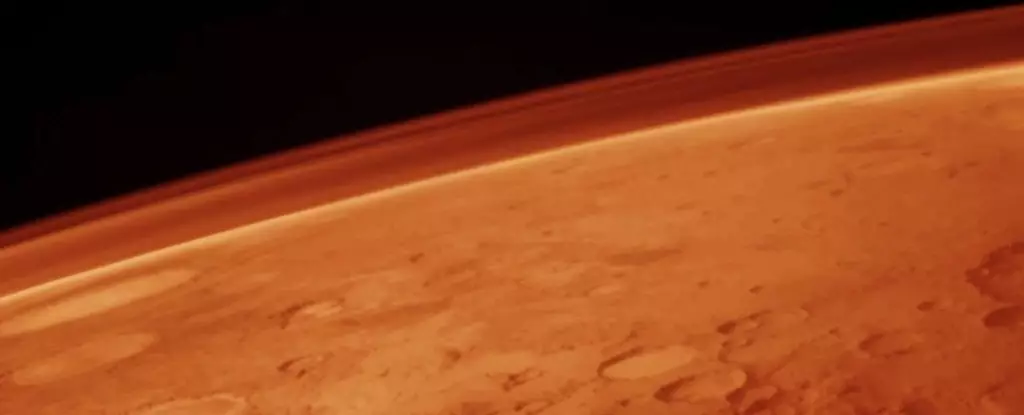For centuries, humanity has been enamored with the idea of venturing beyond our home planet, and Mars has become the crown jewel in this celestial ambition. The notion of making Mars a second Earth resonates deeply with those who believe in the potential for human colonization of other worlds. However, as we dive into the science of terraforming, it becomes apparent that this dream is not just a matter of human ingenuity; it is also a monumental challenge involving complex physics and vast resources. Recent discussions, particularly those presented by Dr. Leszek Czechowski, illuminate the stark realities confronting this age-old aspiration.
Reality Check: The Physics of Terraforming
Dr. Czechowski’s findings, presented at the prestigious Lunar and Planetary Science Conference, provide a sobering analysis of what it would take to alter Mars’ environment to make it hospitable for human life. The stark reality is that current atmospheric conditions on Mars are so hostile that even a brief exposure without protective gear could lead to dire consequences. Water in the human body would begin to boil at present Martian pressures, underscoring the life-threatening conditions many would face upon arrival. This stark indicator highlights just how far we are from achieving anything resembling a sustainable human presence.
With the Martian atmosphere currently at about 1% of Earth’s, the goal is to raise it to a pressure that would allow liquid water to exist and support life. Hellas Planitia, a lowland region of Mars, is identified as the most promising area, where pressure levels are slightly more favorable—still, at just 1/100th of Earth’s sea level pressure. These numbers emphasize that Mars remains a barren wasteland, putting into perspective the intricateness of terraforming ambitions.
Material Sourcing and the Constraints of Space
One of the most significant challenges in thinking about terraforming Mars is the sheer amount of materials required to alter its atmosphere. According to Dr. Czechowski, fulfilling these needs may lead us to the vast expanse of the Kuiper Belt. Utilizing asteroids may seem like a feasible plan, yet they also fall short due to their minimal nitrogen and water content—critical components for creating a breathable atmosphere. This observational insight suggests that sourcing materials from the Oort Cloud could be a more effective strategy. However, a grand vision encounters a staggering temporal barrier: transporting materials from the Oort Cloud might take over 15,000 years—an eternity by any standard.
These logistics give rise to deep questions about sustainability and feasibility. Can humanity afford to wait millennia to see the fruits of its labor? Moreover, the prospect of crashing icy bodies into Mars to facilitate this process introduces risk. Unpredictability in space navigation and the potential for loss during the transit of these relatively fragile structures raise doubts about our ability to enact such a dramatic plan.
Engineering Marvels: The Future of Propulsion in Terraforming
Alongside the logistical hurdles, the engineering aspect presents additional complexities. The desire to employ gravity assists for propulsion could inadvertently dismantle the very materials we need to create a livable atmosphere. Dr. Czechowski’s advocacy for alternative propulsion methods underlines the urgency for innovation in space travel technology. A fusion reactor powered ion engine is one such solution he proposes, albeit with scant specifics. This call for technological advancement is both captivating and daunting; it echoes the early age of space exploration when visionaries tirelessly paved the way for breakthroughs.
Yet the question remains: how close are we to realizing this engineering dream? The answer involves not just theoretical designs but practical, robust systems that can translate dreams into reality. Innovations must not only match the ambitious goal of changing an entire planet’s atmosphere but also do so sustainably and safely.
The Human Spirit: Unyielding Dreams amid Challenges
Despite the daunting obstacles, the allure of terraforming Mars continues to inspire countless enthusiasts and scientists alike. The challenges presented by the effort—massive resource allocation, technological advancement, and the raw physics of space—provide a backdrop for human grit and perseverance. Humanity’s inexplicable urge to push boundaries offers a silver lining; that persistent passion fuels dreams even when faced with apparent impossibilities.
In essence, while the challenges of terraforming Mars are irrevocably complex, the human spirit remains undaunted. Instead of viewing these hurdles solely as impediments, they can be framed as unique opportunities that may one day ignite a new age of exploration and innovation. Even if the journey involves crashing icy bodies into the Martian surface, the pursuit of a new frontier for humanity should be nothing short of celebrated.

